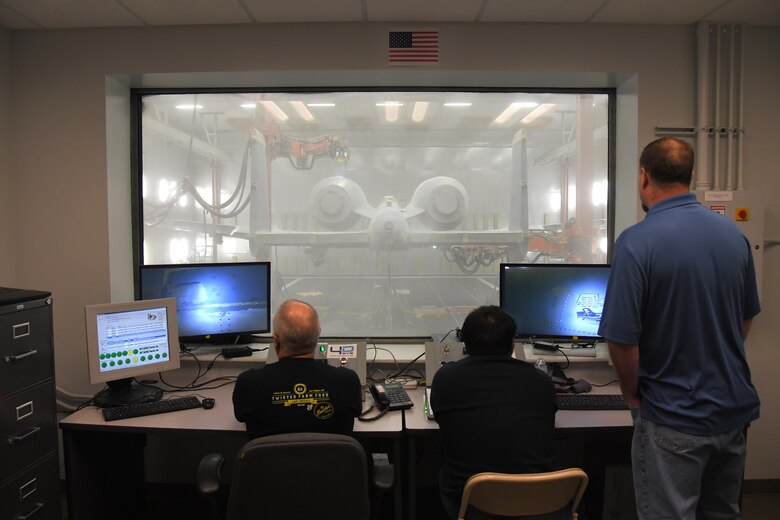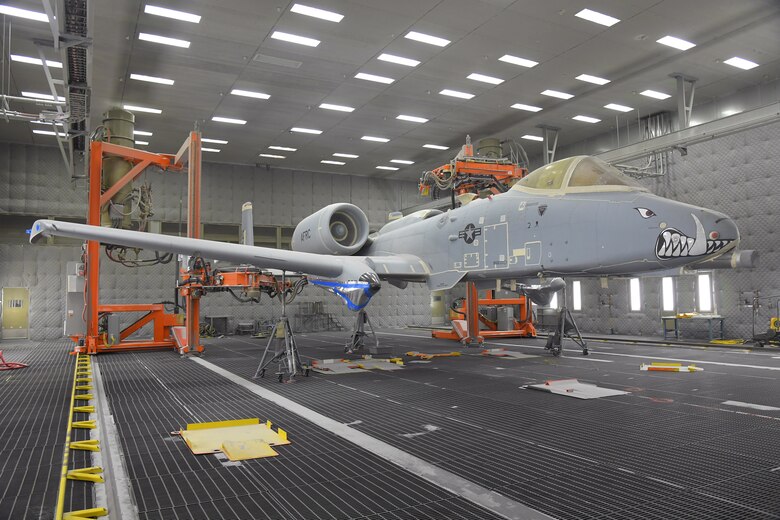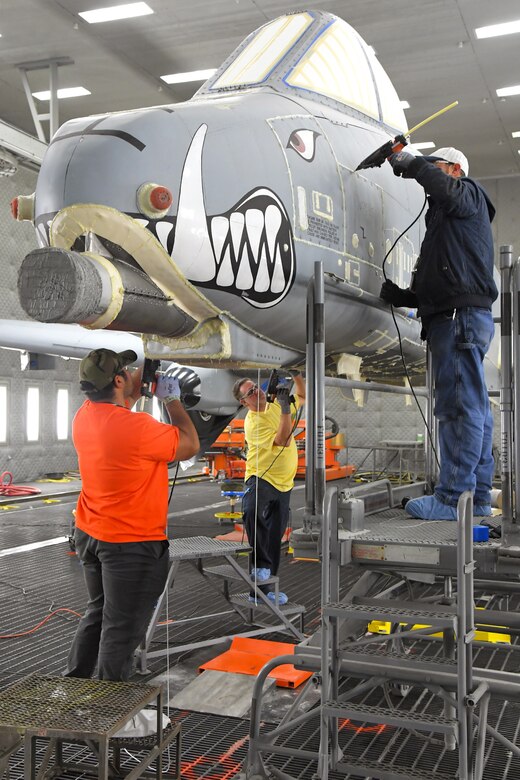Robotic media blasting used to strip paint from fighter aircraft such as the F-16 Fighting Falcon has been around at Hill Air Force Base for more than three decades. Now, the technology is being used for the first time to remove paint from the A-10 Thunderbolt II.
The 576th Aircraft Maintenance Squadron is upgrading its traditional manual media blast paint removal process by using new-generation robots to strip the paint from A-10s that come to the base for depot overhaul and maintenance.
All aircraft require regular exterior maintenance to protect their metal surfaces from corrosion due to moisture and the harsh environments in which they continually operate.
The process is expected to reduce the man-hours it takes to strip paint from the aircraft and increase safety by removing employees from the blasting atmosphere, resulting in measurable time and costs savings.
"There are going to be across-the-board improvements including a dramatic reduction in exposure to a Hexavalent Chromium dust environment. This is perhaps the greatest benefit to the robotic system," said Tim Randolph, 576th Aircraft Maintenance Squadron director. "Savings will also be seen with reduced operating time and less power consumption, as well as reduced costs in material. We really haven't found a downside to this system."
James Gill, Corrosion Control flight chief for the 576th AMXS, said while the traditional manual media blast process is effective, it's labor intensive, requiring teams of workers at least three full days to complete.
The new paint-removal process is accomplished by two robots, each with four hose attachments that move independently along both sides of the aircraft. In addition, the time to strip an A-10 is decreased from three days to 9-12 hours.
"Compared to the manual paint-stripping method, the robots use half the amount of blast media at half of the air pressure, while removing an extremely precise thickness, uniformly, across the entire aircraft surface," Gill said. "This translates into a process that is less stressful on the aircraft skins and saves money in media cost, while creating only half the waste stream."
In addition to the robotics process, a new laser-burn process is currently being tested and used on F-16s with proven success. However, the squadron is still maturing the process, and hopes to apply this process to the A-10s in the future.
By using new robotic technology, the squadron is expanding its capacity by adding capability.
Randolph said each of three processes have different capabilities and inherent limitations, but combined together, can reduce the total time an aircraft spends in depot maintenance and helps return it to the warfighter faster.

Corrosion control technicians with the 576th Aircraft Maintenance Squadron monitor two media blast robots as they strip paint off the first production A-10 Thunderbolt II to receive a new robotic removal process, Dec. 4, 2019, at Hill Air Force Base, Utah. (U.S Air Force photo by Todd Cromar)

The 576th Aircraft Maintenance Squadron prepares the first production A-10 Thunderbolt II for paint removal using a new robotic media blast technology, Dec. 4, 2019, at Hill Air Force Base, Utah. The aircraft is prepared by sealing up all seams and holes in the outer-surface skin to prevent the blast media from entering the aircraft. (U.S Air Force photo by Todd Cromar)

Anthony Montanez, left, Dennis Reeves, center, and Brady Ringel, 576th Aircraft Maintenance Squadron technicians, prepare the first production A-10 Thunderbolt II for paint removal using a new robotic media blast technology Dec. 4, 2019, at Hill Air Force Base, Utah. The corrosion control technicians seal up the seams and holes in the outer-surface skin to prevent the blast media from entering the aircraft. (U.S Air Force photo by Todd Cromar)






